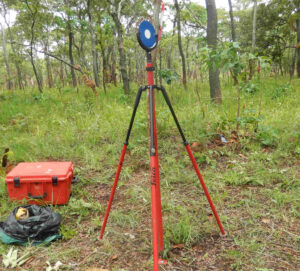LMI DYCOFAC
Dynamique des écosystèmes continentaux d’Afrique Centrale
LMI DYCOFAC

Description
The LMI DYCOFAC was created to pursue and develop research actions on the theme “critical zone (ZC) and water resources” in Central Africa, on the basis of multidisciplinary projects co-constructed between scientists from the Central Africa sub-region. (mainly Cameroon and Gabon) and the North (France, UK, Belgium and EUA). The main objective of this LMI is to study the links between changes in climate and land use through the dynamics of plant cover and biogeochemical cycles. These links, whether forcing or responding, are complex, insufficiently studied and poorly quantified in terrestrial forest ecosystems in Central Africa. They must be approached in an integrated manner at different spatial and temporal scales. Better understanding the responses of the ZC in terms of structural change, storage and flow (solutes, water, energy, gas and sediments) in the face of climate change and land use should make it possible to use the knowledge acquired to preserve ecosystem services. This implies calling on disciplines such as climatology, ecology, hydrology, geochemistry and geography. Thus, research actions on the properties and processes of the ZC must be integrated in order to collect spatially dense and temporally extended datasets. The watershed approach will be at the heart of a “multi-scale” approach. The project is part of the current international scientific dynamic of federating research actions on the assessments and processes of the ZC, and of inserting them into observation networks of terrestrial ecosystems.
Scientific objectives
The objective of LMI DYCOFAC is to study the functioning of the critical zone and the water resource in Central Africa. This will involve providing answers to the links, whether forces or responses, existing between climate change, vegetation dynamics and the determinants of biogeochemical cycles. These links are complex, poorly understood and poorly quantified in Central Africa. They will be addressed at different spatial scales (from the plot to the large river basin) and temporal (from the second to several hundred thousand years).
The implementation of this LMI is built around a multidisciplinary approach. This original approach will put in close relation the communities of modellers (climate, weathering, water transfers, vegetation), geochemists and hydrologists (acquisition of time series of concentration and flux data allowing to reconstruct the fluxes of elements. , process of interactions at water-soil-rock-plant-atmosphere interfaces) as well as ecologists (vegetation dynamics, biomass).
In terms of structuring research and building scientific capacity in Central Africa, IRD and its partners have previously and sustainably invested (mainly in Cameroon and Gabon) in:

- Strengthening activities with National Observation Services “Tropical experimental watersheds” BVET (upstream Nyong basin) and HYBAM (Congo river basin)
- The establishment of a network of permanent forest plots (around a hundred distributed in Cameroon and Gabon), to monitor forest dynamics, assess gradients of plant diversity and carbon (largely funded by external projects ),
- The feasibility study and the first investigations for the establishment of new environmental observatories in Cameroon (urban and peri-urban basins of Douala and Yaoundé, Sanaga basin undergoing hydraulic development) and in Gabon (river basin undergoing change in the Ogooué, where IRD and its partner TNC are also involved in vegetation mapping),
- Capacity building within the framework of regional masters (Integrated Management of Coastal and Marine Ecosystems – Cameroon, Gabon -, and Masters in Water Resources and Environmental Risks in African Metropolises MAREMA, ERASMUS EU).
Thematic axes of the LMI DYCOFAC

Sites
Bassin fluvial du Nyong
Cameroun
network of nested sub-basins of 1 km2 (BVE of Nsimi) to 20,000 km2 monitored in continuous hydro-meteorological data since 2001 (http://bvet.obs-mip.fr/fr/presentation), labeled “South label” of IRD since 2015 and member of the Watershed Network (RBV, AllEnvi),
Bassin fluvial de l’Ogooué
Gabon
hydro-meteorological equipment within the framework of the RALTERAC project (EC2CO / INSU),
Bassins aménagés pour énergie hydroélectrique
Cameroun, Gabon
as part of impact studies financed by hydropower companies such as EDF, NHPC and EDC for Sanaga in Cameroon and EDF and SEEG for M’Bei in Gabon,
Bassin du Congo
Congo
supported under SNO HYBAM. Possible collaborations.
